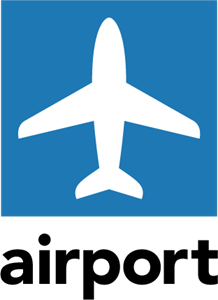You would assume this idea came to me while doing extensive traveling for work. Although I did travel a lot for work last year, spending 2 months in hotels in 3 business trips and earning a lot of flight miles, that is not the case. It simply came to me while having a discussion with some representatives of a company that was providing a very large GDS (Global Distribution System) for airlines/airports enabling them to better do ticketing reservations, handle flight schedules, etc. Asking myself what could be the next product this company could sell, I immediately thought at using the NarrowBand-IoT technology within an airport.
How IoT could be integrated in the airports business?
In a Google News Alerts about IoT, I read a nice article about NarrowBand IoT as ‘ a standards-based low power wide area (LPWA) technology developed to enable a wide range of new IoT devices and services. NB-IoT significantly improves the power consumption of user devices, system capacity and spectrum efficiency, especially in deep coverage. Battery life of more than 10 years can be supported for a wide range of use cases. New physical layer signals and channels are designed to meet the demanding requirement of extended coverage – rural and deep indoors – and ultra-low device complexity.’ (Source: https://www.gsma.com/iot/narrow-band-internet-of-things-nb-iot/ ) You can easily google ‘NarrowBand IoT or NB-IoT for more information.
I especially liked in the potential of this technology:
- it’s cheap and consumes few resources;
- it would work very well in indoor rushed places.
So what we could connect with NB-IoT?
Imagine that all the luggage and all the travelers would get a very small device at their check in, that would locate their real time position using the NarrowBand-IoT technology within an airport.
With a mobile app, airlines customers could read the status of their luggage at arrival finding in real time how much they have to wait till they will receive it.
The airlines companies could automate the luggage boarding based on their position (not needing a human to handle a bar-code reader and load them into the plane), better manage them and offer better services to their customers by reducing to 0 the number of lost luggage. Even more, based on the small devices given to customers, airline representatives could locate passengers that are late at their boarding process, helping them not to lose the plane they bought a ticket for. It could help them better manage the boarding process or it would enable them to send customized alerts to passengers that risk too much to lose their flight by being too far away from the boarding zone.
On the aesthetics of the small tracking devices, I know for sure that there are companies that can build them literally paper thin. Finding the right devices would be an interesting part of an implementation project but for sure not the hardest one.
It might sound a bit intrusive, knowing the place of anyone and everything, but remember this would be applied in big airports, with the goal to optimize the boarding processes and offer better services. Even for security purposes, knowing where and when everything and everyone is located in a big airport it’s a must, to ensure each individual’s goal to reach his destination is seamlessly achieved in the most secure way.
Also, monitoring the flows and the paths of all the luggage and noticing the customers behaviors, would be a very good raw data for obtaining reports that could lead to optimization efforts. Once the processes are optimized, everyone (both the travelers and the airlines) would benefit of it. Not all the data needs to be stored, only the processed data stripped out of personal identifiers with the goal to use it for predictability or for demo testing/ simulating the effect of new processes.
It seems that some companies are already working at a similar implementation. Per this article Huawei and Telefonica Germany are starting a POC in the Munich airport: http://www.prnewswire.co.uk/news-releases/huawei-and-telefonica-germany-join-hands-to-launch-nb-iot-smart-meter-poc-in-munich-airport-680823721.html. I flew through Munich in July 2017 and haven’t noticed anything, well mostly because I had to catch up with my emails while waiting for the next flight. Someone in the article says that “The Internet of Things is not a goal in itself. We want to increase efficiency and enable new services,”. I couldn’t agree more and my idea from above is just one example of additional services that could be enabled using NarrowBand-IoT in airports around the world.

